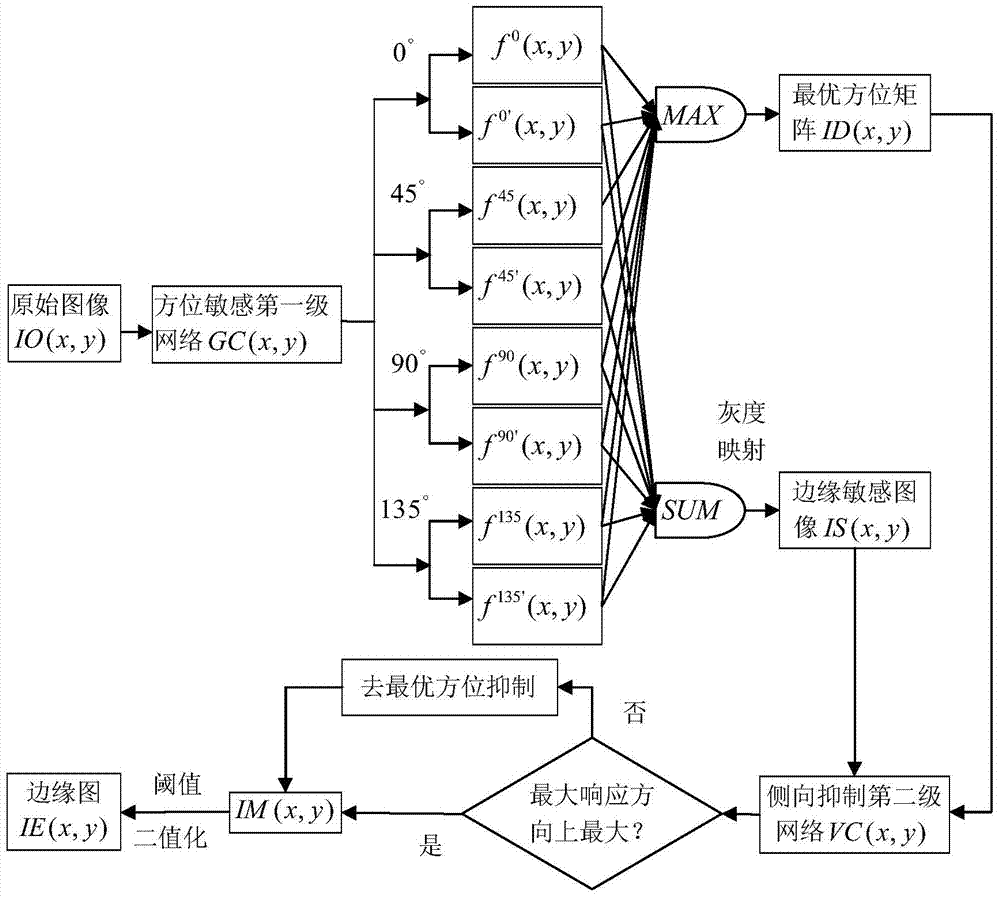A Classified Image Edge Detection Method Based on Visual Path Orientation Sensitivity
An image edge and detection method technology, which is applied in the field of visual neural computing, can solve the problems of ignoring the effect of grading processing and reducing the contrast of image edges, and achieve the effects of protecting weak details, removing false edges and texture noise, and accurate positioning
- Summary
- Abstract
- Description
- Claims
- Application Information
AI Technical Summary
Problems solved by technology
Method used
Image
Examples
Embodiment Construction
[0017] combine figure 1 , the specific implementation steps of the present invention are:
[0018] Step (1) According to the size of the original image IO(x, y) (x=1,2,...M; y=1,2...N, the variables x and y are the same below, M and N respectively represent the width and height of the image) , to construct an orientation-sensitive first-level neuron network GC(x,y) of the same size, in which a single neuron adopts the LIF model shown in formula (1):
[0019]
[0020] where v is the neuronal membrane voltage, c m is the film capacitance, g l is the leakage conductance, RF represents the receptive field range of the neuron, w x,y is the synaptic connection weight. I x,y is the excitation current, corresponding to the normalized gray value of the image IO(x,y) (x=1,2,...M; y=1,2...N) at the position (x,y). v th is the pulse emission threshold, v reset is the static potential. when v is greater than v th When , the neuron will generate a spike, and at the same time v ...
PUM
 Login to View More
Login to View More Abstract
Description
Claims
Application Information
 Login to View More
Login to View More - R&D
- Intellectual Property
- Life Sciences
- Materials
- Tech Scout
- Unparalleled Data Quality
- Higher Quality Content
- 60% Fewer Hallucinations
Browse by: Latest US Patents, China's latest patents, Technical Efficacy Thesaurus, Application Domain, Technology Topic, Popular Technical Reports.
© 2025 PatSnap. All rights reserved.Legal|Privacy policy|Modern Slavery Act Transparency Statement|Sitemap|About US| Contact US: help@patsnap.com



